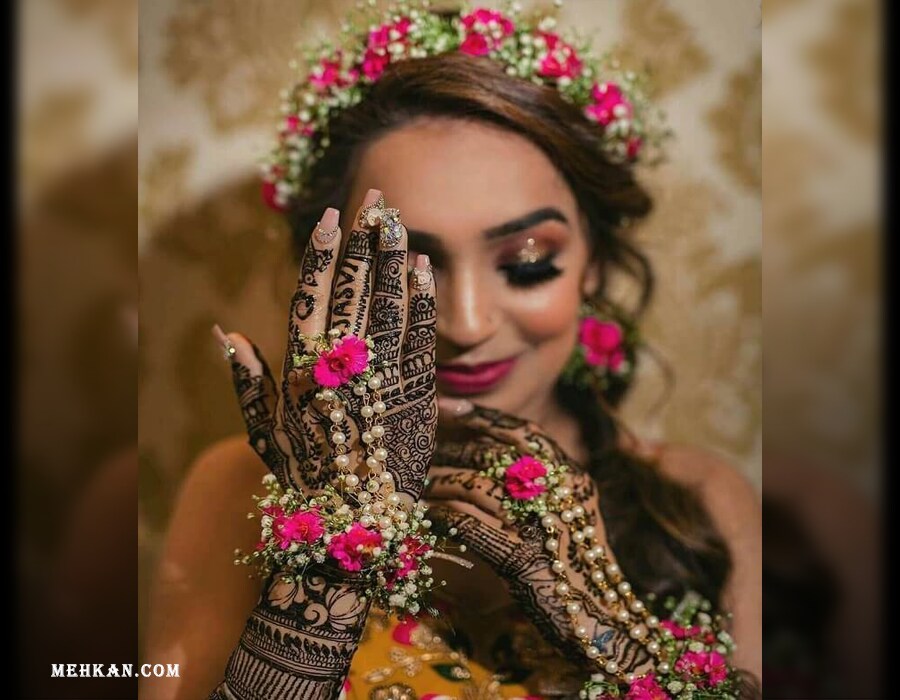
03 May Mehndi Ceremony: A Colorful Pre-Wedding Ritual
The Mehndi ceremony, also known as the Henna ceremony, is a vibrant and joyful pre-wedding ritual that holds immense cultural significance in many parts of South Asia, the Middle East, and North Africa. It is a celebration where intricate henna designs are applied to the hands and feet of the bride, as well as to other female family members and friends.
The Mehndi ceremony typically takes place a day or two before the wedding day and is often held separately for the bride and groom. It is a time for both families to come together and celebrate the upcoming union while enjoying music, dancing, and delicious food.
The centerpiece of the Mehndi ceremony is the application of henna, a natural dye made from the leaves of the henna plant. Skilled artists or family members carefully decorate the bride’s hands and feet with intricate patterns and designs using a cone-shaped applicator. These designs can range from delicate floral motifs to intricate geometric patterns, and they symbolize joy, love, and good luck.
The application of Mehndi is not limited to the bride alone. Female family members, close friends, and guests also take part in this ritual, applying henna on their hands and feet as a way to share in the celebration and show their support for the bride. It creates a festive and colorful atmosphere as everyone gathers to decorate themselves with beautiful henna designs.
The Mehndi ceremony is not only a visual spectacle but also a time for singing traditional songs, dancing, and exchanging laughter. It is common for family members and friends to perform traditional dances like the Dholki dance, where they sing and play traditional instruments like the Dholki (a two-headed drum). This creates an atmosphere of joy and peace, further enhancing the celebratory mood of the occasion.
Apart from its aesthetic appeal and cultural significance, Mehndi is believed to have several symbolic meanings. The dark color of the Mehndi stain is said to represent the strength of the bond between the bride and groom. It is also believed to bring good luck, protect against evil spirits, and mean fertility and prosperity for the couple’s future.
The Mehndi ceremony is a cherished tradition that adds a touch of beauty, cultural richness, and excitement to the wedding celebrations. It creates lasting memories for the bride, her family, and friends, serving as a reminder of love, togetherness, and the beginning of a new chapter in the bride’s life.
Mehndi tradition

The tradition of henna dates back to ancient India, where it was used for medicinal purposes. Over time, the intricate designs and patterns became more elaborate and complex, evolving into an art form. Today, Mehndi is an important part of Indian weddings and is considered a symbol of luck and prosperity.
Mehndi ceremony
The Mehndi ceremony usually takes place a few days before the wedding and is an all-female event. The bride and her female family members and friends gather together for a day of celebration and joy. The bride sits in the center of the room, while other women apply henna designs to her arms and legs. The designs are intricate and detailed and can take hours to complete.

The ceremony often includes music, dancing and delicious food. This is the time for women to come together and celebrate the upcoming wedding. Mehndi ceremony is a wonderful way to honor the bride and show support and love for her.
Importance of Mehndi
Mehndi is considered a symbol of love, fertility and good luck. It is believed that the darker the mehndi stain, the stronger will be the love between the bride and groom. It is also said that mehndi designs will bring luck and prosperity in the couple’s life.

Apart from its symbolic meaning, mehndi also has practical benefits. The henna paste used in the designs has natural cooling properties, which can be soothing to the skin. It is also said to have antibacterial and antifungal properties, which may help prevent infections.
Mehndi as a fashion statement

In recent years, mehndi has become a popular fashion statement. Many brides incorporate mehndi designs into their wedding attire, such as on their arms and legs or on their bridal veil. Mehndi designs have also become a popular trend for celebrities and fashion models, with many including intricate henna designs in their red carpet looks.
In Short
The mehndi ceremony is a beautiful and meaningful pre-wedding ritual that has been an important part of Indian culture for centuries. It’s a fun celebration that honors the bride’s heritage and culture and is a great way to bring family and friends together to celebrate the upcoming wedding. Mehndi is not just a fashion statement, it is an art form and a symbol of love, fertility, and fortune that will remain an integral part of Indian weddings for generations to come.

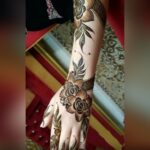
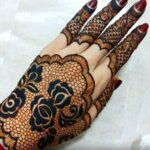
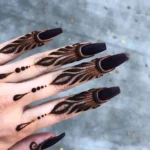
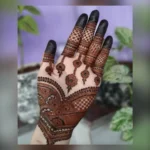
No Comments